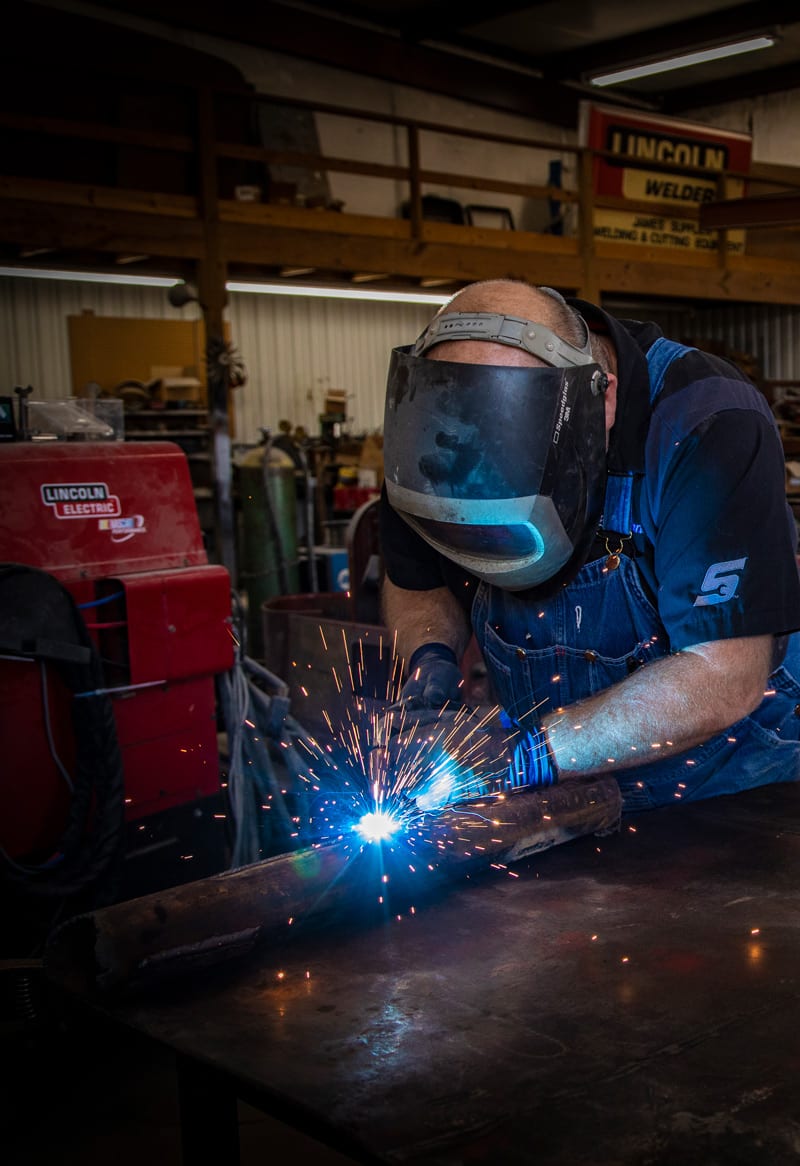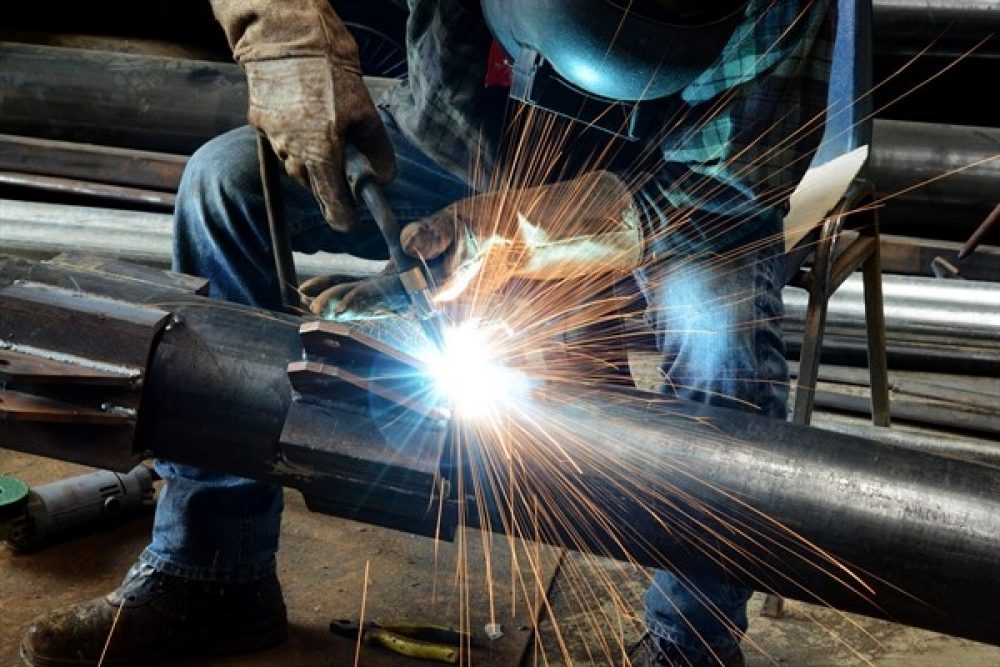All Regarding Welding: Secret Insights Into Techniques and Finest Practices for Success
Welding encompasses a variety of methods, each matched for specific products and applications. Understanding these techniques, such as GMAW, SMAW, and TIG, is important for achieving suitable outcomes. The appropriate devices and safety methods can not be neglected. As prep work and fixing play vital roles in the welding procedure, grasping these aspects can greatly enhance the high quality of the last item. What are the crucial variables that assure a successful weld?
Recognizing Different Welding Methods
Welding techniques include a range of techniques, each matched to details applications and materials. Among one of the most typical methods are Gas Metal Arc Welding (GMAW), Secured Metal Arc Welding (SMAW), and Tungsten Inert Gas Welding (TIG) GMAW, also known as MIG welding, is prominent for its speed and flexibility, making it optimal for thin materials. SMAW, or stick welding, is preferred for its simplicity and effectiveness in outside atmospheres, especially with thicker metals. TIG welding supplies accuracy and control, making it appropriate for intricate job and non-ferrous metals (Montana Mobile Welding and Repair Fabrication). Each strategy has its distinct benefits and factors to consider, enabling welders to pick the finest method based upon the task's requirements, material kind, and desired results. Recognizing these techniques is important for successful welding
Important Welding Devices and Devices
While numerous welding methods require specific skills, the best tools and tools are equally important for attaining quality outcomes. Important welding devices consists of welding equipments, which differ relying on the technique-- such as MIG, TIG, or stick welding. Protective gear, consisting of aprons, gloves, and safety helmets, guarantees safety and security and comfort during the procedure. On top of that, components and clamps assist safeguard products in position, making certain precision in welds. Consumables like welding poles, cord, and shielding gas are likewise essential elements that influence the quality of the weld. Devices such as grinders and cutters facilitate surface area preparation and post-weld ending up, contributing to a professional result. Investing in top quality equipment ultimately enhances the performance and performance of welding jobs.
Safety Practices in Welding
Appropriate safety methods are vital in the welding industry to secure workers from possible risks. Welders need to use suitable individual safety tools (PPE), including helmets with correct shading, gloves, and flame-resistant apparel. Appropriate air flow is crucial to decrease direct exposure to harmful fumes and gases created during the welding process. In addition, employees need to be trained in the correct handling of welding tools to stop mishaps. Fire precaution, such as keeping flammable materials far from the welding location and having fire extinguishers readily offered, are needed. Regular examinations of devices and work areas can aid recognize potential hazards prior to they lead to mishaps. By adhering to these safety and security practices, welders can develop a safer working environment and reduce risks connected with their profession.
Preparing Materials for Welding
Preparing materials for welding is a crucial action that significantly influences the top quality and honesty of the final item (Montana Mobile Welding and Repair Fabrication). Appropriate preparation includes cleaning the surface areas to remove contaminants such as oil, corrosion, and dust, which can compromise the weld. Techniques such as grinding, sanding, or using solvents are typically used to achieve a tidy surface area. Furthermore, guaranteeing that the materials fit with each other well is essential; voids can cause weak welds. It's likewise crucial to think about the placement and positioning of the parts, as this will certainly influence the convenience of welding and the final end result. Ultimately, picking the appropriate filler product and making sure compatibility with the base steels is vital for attaining solid, resilient welds
Tips for Getting High-Quality Welds
Attaining premium welds calls for attention to information and adherence to ideal methods throughout the welding anonymous process. Correct joint preparation is crucial, making sure surfaces are free and clean from impurities. Picking the appropriate filler product and welding method based upon the base metals is crucial for ideal bonding. Keeping consistent traveling rate and angle while welding can avoid flaws and advertise harmony. Additionally, managing warmth input is essential; extreme warm can lead to bending and weakened joints. If needed, routinely evaluating the welds during the procedure enables for instant adjustments. Ultimately, employing proper post-weld treatments, such as cleaning and stress alleviation, can improve the resilience and stability of the weld, inevitably guaranteeing an effective end result.
Fixing Common Welding Issues
Welding often provides challenges that can influence the high quality and honesty of the end product. Usual problems such as porosity, inconsistent weld grains, and getting too hot can occur, each requiring specific repairing methods. Comprehending these troubles is essential for welders to boost their abilities and attain optimal outcomes.
Porosity Troubles Explained
Although porosity can frequently be forgotten, it remains a vital concern in welding that can jeopardize the integrity of an ended up product. Porosity describes the visibility of small gas pockets within the weld bead, which can compromise the joint and lead to early failure. This issue usually occurs from impurities, wetness, or incorrect securing gas coverage during the welding procedure. To reduce porosity, welders should verify that the base materials are tidy and completely dry, make use of suitable shielding gases, and preserve regular welding specifications. Routinely inspecting the devices and setting can also assist recognize prospective concerns prior to they show up in the weld. Dealing with porosity successfully is essential for attaining strong, durable welds that meet high quality requirements.

Irregular Weld Beans
Irregular weld grains can considerably impact the top quality and toughness of a completed item. Numerous elements contribute to this problem, including incorrect traveling rate, wrong amperage settings, and inconsistent electrode angles. When the welder relocates too promptly, a grain might show up slim and do not have penetration, while relocating as well gradually can cause extreme build-up. Furthermore, utilizing the incorrect amperage can cause either undercutting or extreme spatter, both of which concession weld integrity. The welder's strategy, such as irregular torch movement, can likewise lead to irregular bead look. To reduce these issues, welders need to concentrate on keeping consistent, regulated motions and guaranteeing appropriate devices setups to achieve uniformity in their welds. Uniformity is key to attaining trustworthy and solid welds.
Getting Too Hot and Bending Issues
Too much warmth during the welding process can bring about substantial overheating and buckling concerns, affecting the architectural honesty of the work surface. These next page troubles typically show up as distortion, which can endanger positioning and fit-up, making additional setting up testing. Factors adding to overheating consist of the selection of welding parameters, such as voltage and take a trip speed, along with the kind of material being welded. To reduce these concerns, welders should maintain constant travel speed and appropriate heat input while keeping track of the work surface temperature. Furthermore, pre-heating or post-weld heat treatment can help reduce stresses brought on by fast air conditioning - Montana Mobile Welding and Repair Welding. Regular examination and adherence to finest practices are necessary in preventing getting too hot and making sure the durability and reliability of welded frameworks
Often Asked Concerns
What Are the Job Opportunities in the Welding Market?
The welding industry supplies varied occupation opportunities, including placements as welders, assessors, educators, and engineers. Experts can work in production, building and construction, aerospace, and vehicle sectors, taking advantage of solid demand and affordable incomes in different functions.
Exactly How Can I Boost My Welding Rate Without Giving Up Quality?
To enhance welding speed without compromising top quality, one need to exercise efficient methods, preserve tools, maximize setups, and improve hand-eye control. Routine training and seeking comments can likewise substantially contribute to accomplishing quicker, high-quality welds.
What Qualifications Are Offered for Welders?
Countless qualifications exist for welders, consisting dc stick welder of those from the American Welding Society (AWS), the National Facility for Construction Education And Learning and Research Study (NCCER), and different industry-specific organizations. These credentials improve employability and show skill proficiency.
How Does Welding Influence the Residences of Metals?
Welding influences the residential properties of steels by altering their microstructure, which can bring about adjustments in solidity, toughness, and ductility. Heat input and cooling prices during the procedure substantially impact these material attributes.
Can I Bonded Dissimilar Metals Together?
